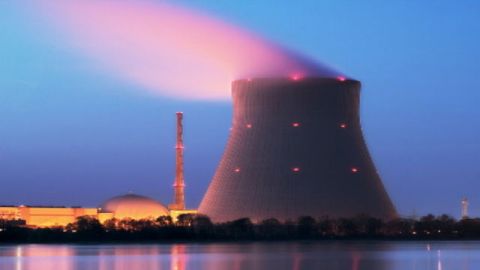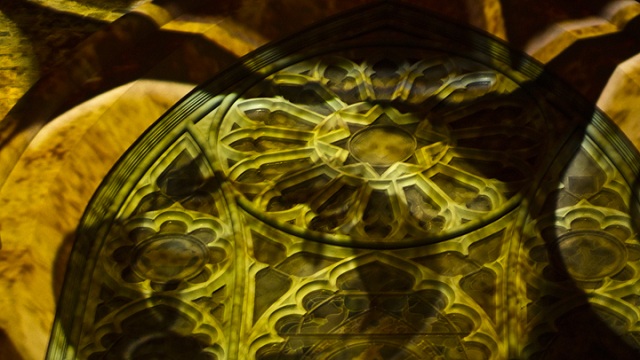Nuclear Non-Proliferation…of Nuclear Fear

A special task force is about to report to the Nuclear Regulatory Commission about whether America’s 104 nuclear reactors could handle the challenges that led to partial meltdowns at the Fukushima complex in Japan; the near total loss of back-up power, or problems controlling the highly radioactive nuclear waste stored underwater at each plant. The task force will almost surely identify areas that need improvement. The NRC and the industry will say this is good…a part of ongoing efforts to make low risks even lower. Anti-nuclear advocates, quite possibly including Dr. Michiko Kaku, who blogs his fear of nuclear power elsewhere on this site, will magnify every flaw as an alarming example of why nuclear power is a terrible danger.
There are plenty of good reasons to oppose nuclear energy;
– It’s not cost-competitive
– The billions it costs to build just one nuclear plant could build a lot more renewable energy facilities and help make those sources more cost-competitive (though solar and wind have significant limits as sources of base load supply).
– More nuclear power plants reduces the need for conservation and efficiency, and the wiser use of the watts we already generate.
But the biggest reason most people oppose nuclear power is fear, and that’s actually the weakest reason of all. In fact, the fear may be a greater risk than the radiation itself.
More than 100,000 survivors Hiroshima and Nagasaki have been followed for two generations. Of those within 3 kilometers of the explosions who survived not only the high level exposures at the moment of the detonation but weeks of continued exposure through the air and water and food, only about three quarters of one percent of them have died prematurely due to radiation-induced cancer….roughly 800 out of 120,000. The children of women pregnant at the time had many birth defects, but no multi-generational genetic damage has been found. (For much more, see)
Based on what we’ve learned from the horrific radiation exposures from atomic weapons – much higher exposures than anything a nuclear power plant accident could create – The Union of Concerned Scientists recently calculated that as many as 27,000 people might die of radiation-induced cancer because of the Chernobyl accident, out of the entire global population of 6 billion. Since various populations got varying doses from Chernobyl, and since dose matters (higher dose = greater risk, with no threshold below which even small exposures are safe), the UCS analyzed the risk for sub-populations based on how much radiation they got. The UCS, an anti-nuclear watchdog, didn’t include the last column, the relative risk, the part that puts the risk in perspective. I added that, to provide a fuller context of the overall risk of ionizing radiation. It certainly does cause cancer, but it’s not nearly as dangerous as most people fear.
Absolute and Relative Cancer Death Risk from Radiation
Released From Chernobyl
(Union of Concerned Scientists)
Population
affected
Number of People
Excess Cancer Death
(ABSOLUTE RISK)
Percent who die out of whole population
(RELATIVE RISK)
Recovery workers
530,000
4,000
8 tenths of one percent (0.8%)
Evacuees
115,000
300
One quarter of one percent (0.26%)
Residents of “more contaminated areas”
25,000
1,000
Four percent (4%)
Residents of “contaminated areas in Belarus, Ukraine and affected areas of Russia
6,400,000
3,000
Less than twentieth of one percent (0.05%)
Other Residents of Belarus, Ukraine, affected parts of Russia
92,000,000
5,000
Five one thousandths of one percent (0.005%)
All other residents of Europe
500,000,000
9,000
Two one thousandths of one percent (0.002%)
Everybody else in the world
5.5 billion
4,000
7 one hundred thousandths of one percent (0.00007%)
(The UCS total is 26,300. They rounded it up to 27,000 in their press release)
Despite these numbers, the word “radiation” rings all sorts of emotional alarm bells, for reasons that have been identified by research into the psychology of risk perception.
– We’re more afraid of risks that kill in particularly painful ways, like cancer.
– We are more worried by risks we can’t detect with our own senses.
– We are more worried by risks that are imposed on us (as opposed to the potentially carcinogenic radiation we accept when we willingly expose ourselves to X rays or CAT scans or bask in the sun, which causes 8,700 skin cancer deaths in the US each year.
– The atomic bombs, and nuclear weapons tests, and Three Mile Island and Chernobyl and now Fukushima, have stigmatized “nuclear radiation” as scary as soon as we hear those words.
The fear of radiation may in fact be a greater risk than the radiation itself. The epilogue of every major nuclear accident, including Three Mile Island and Chernobyl, has found that the fear of radiation did far more damage to people’s health -in the form of stress, and alcoholism, and depression – than the radiation. Certainly our fear of nuclear radiation has contributed to energy policies that have ended up favoring electricity generated by coal, which does far more health damage. In the wake of Fukushima, Germany and Italy have abandoned plans for nuclear expansion. Anti-nuclear advocates will certainly try to use the NRC task force report to reinforce that trend…based on a fear that is largely unfounded.
Few people have heard of the International Atomic Energy Agency, but you may know them as those inspectors who try to keep bad guys from getting nuclear weapons. Non-proliferation, they call it. May I suggest we need another type of nuclear non-proliferation, the non-proliferation of excessive fears that can create real risks all by themselves.
(full disclosure; I have consulted to the IAEA and the nuclear industry on open and honest communications about nuclear power)





